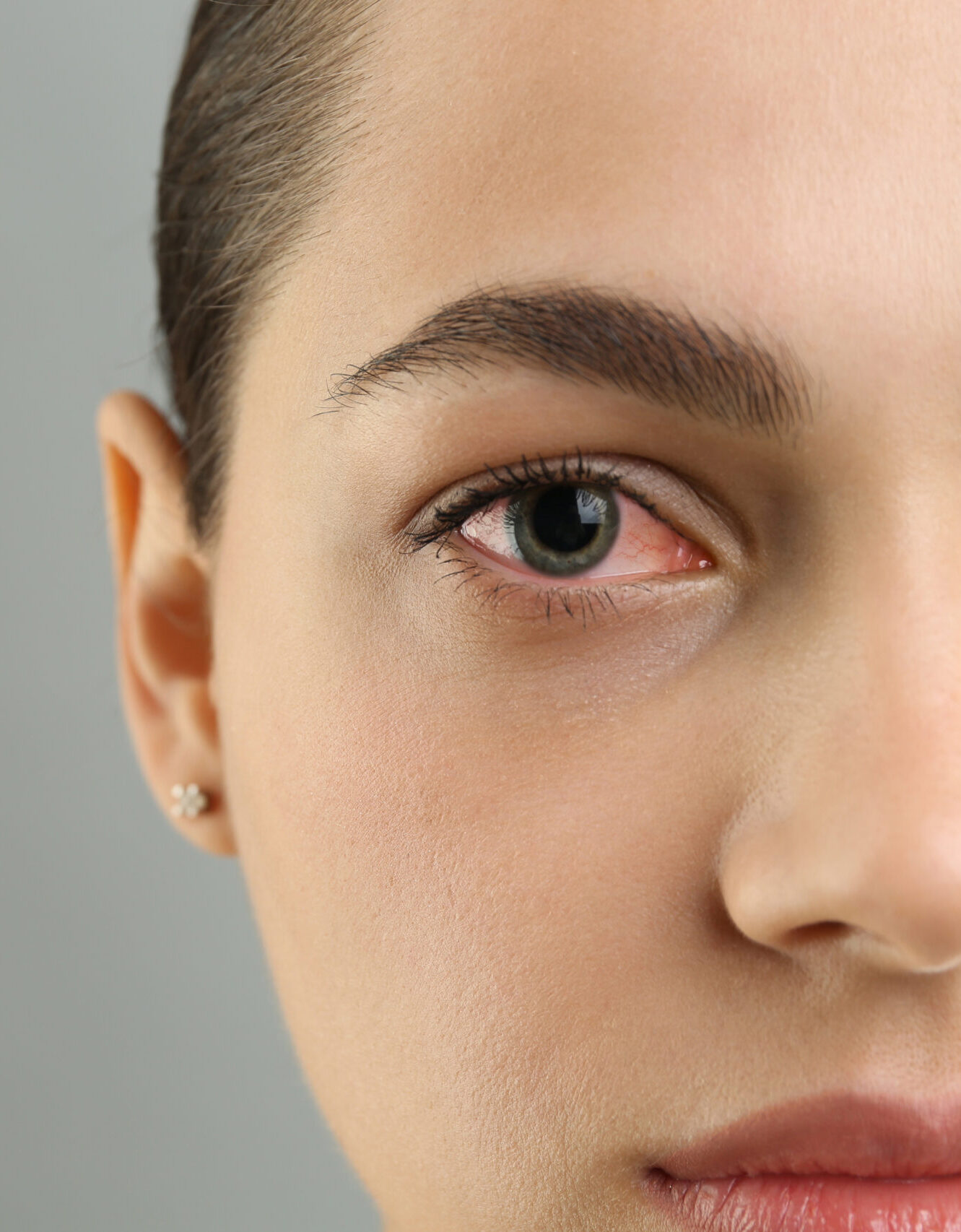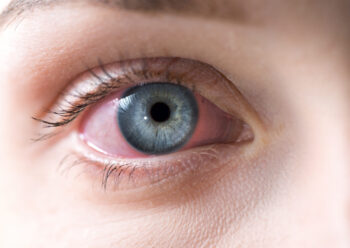Allergic conjunctivitis
Explore an in-depth guide on Allergy Conjunctivitis, covering its causes, symptoms, and effective treatments. Learn about allergy conjunctivitis, its impact, and preventive measures. 

Conjunctivitis means “inflammation of the conjunctiva”1.
The conjunctiva is the transparent membrane that covers the white areas of the eye and the inside of the eyelids2.
Conjunctivitis can be noninfectious (for example allergic conjunctivitis or irritative conjunctivitis) or infectious, related to either viruses or bacteria1. 80% of acute cases of conjunctivitis are viral2.
Viral conjunctivitis may be painful but are mostly benign and self-limiting3. In few cases, the conjunctival infection may spread to the cornea and require medical follow-up2.
The most common virus involved in viral conjunctivitis is the same that causes runny nose and sore throat in people with a common cold4: adenovirus, which is responsible for 65% to 90% of cases of viral conjunctivitis2.

Transmission may occur through contaminated hands contact with the eye or by direct eye contact, by contaminated droplets expelled while coughing or sneezing, fomites, or contaminated swimming pools3,4.
Adenovirus conjunctivitis is highly contagious, usually for 10-12 days from onset, as long as the eyes are red, and during the incubation period of 3-7 days before symptoms onset3.
The conjunctivitis frequently spreads following an epidemic pattern, through entire communities: families, schools, offices, shipyards, athletic teams, residential communities, and military organizations…3
Other viruses may also cause viral conjunctivitis, including herpes viruses: herpes simplex, that causes also fever blister on the lips, and varicella-zoster herpes responsible for chickenpox and shingles3. Measles and mumps viruses can also cause conjunctivitis, which is common in childhood2.
Usually, adenovirus affects patients aged 20-40 years whereas Herpes infection occurs mainly in young children and infants3.
Viral conjunctivitis is usually associated with burning or itching red eye(s) with watery discharge2,3. There may be a tender lump before the ear, which is a lymph node activated in case of herpes infection2.
In most cases, herpes conjunctivitis affects only one eye whereas adenoviral conjunctivitis rapidly extend to the second eye1.
In the case of herpes conjunctivitis, it is often part of a chickenpox infection, and associated with skin blisters on the body1,2. There may be vesicles on the eyelids1.
Most cases of viral conjunctivitis are acute, benign, and self-limited, and the infection usually resolves spontaneously within 2-4 weeks3.
In few cases, viral conjunctivitis (especially with Herpes) may extend to the cornea and threaten the vision2.
Generally, a diagnosis of viral conjunctivitis is made on the clinical features alone and does not require further testing3.

The background helps the diagnosis:
Rapid antigen testing is available for adenoviruses and can be used to confirm suspected viral causes of conjunctivitis to prevent unnecessary antibiotic use1,2.
What treatments are available for viral conjunctivitis?
In most cases, viral conjunctivitis is self-limiting, and treatment only aims at symptoms relief and avoidance of transmission to other people2,3.
Pain may be relieved with cold compresses and chilled artificial tears3.
Some antiseptic eye drops may help decrease contagiousness in patients with adenoviral infections2.
Patients with herpes simplex conjunctivitis should receive antiviral therapy if there is a risk of cornea involvement1.
Antibiotics are not effective against viruses and do not help recovery, but they may sometimes be prescribed by the ophthalmologist to prevent bacterial over-infection, especially in herpes conjunctivitis3.
In general, don’t hesitate to ask your pharmacist for advice if you have any eye symptoms.
On the other hand, if you experience one or more of these symptoms, you should see an eye specialist as a matter of urgency; -Moderate,-Severe pain, -Intense sensitivity to light, -Decreased vision, -Flashes of light, -Dark spots, -Sensation of a foreign object in the eye, -Trauma (injury, contusion, acid burn etc.), -Persisting or worsening symptoms despite appropriate treatment.
